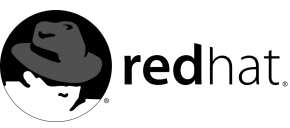

























Appendix A.
Common Exploits and Attacks
Table A 1 details some of the most common exploits and entry points used by intruders to access
organizational network resources. Key to these common exploits are the explanations of how they are
performed and how administrators can properly safeguard their network against such attacks.
Exploit
Description
Notes
Null or Default
Leaving administrative passwords
Commonly associated with
Passwords
blank or using a default password
networking hardware such as routers,
provided by the application package.
firewalls, VPNs and network
This is most common in hardware
attached storage (NAS) appliances;
such as routers and BIOSes, though
Common in many legacy operating
some services that run on Linux can
systems, especially OSes that bundle
contain default administrator
services such as UNIX and
passwords (though Red Hat Linux
Windows;
does not ship with them)
Administrators sometimes create
privileged users in a rush and leave
the password null, a perfect entrypoint
for malicious users who discover the
user
Default Shared
Secure services sometimes package
Most common in wireless APs and
Keys
default security keys for development
preconfigured secure server
or evaluation testing purposes. If these
appliances
keys are left unchanged and placed in
CIPE (refer to Chapter 6) contains an
a production environment on the
sample static key that must be
Internet, any user with the same
changed before moving to a
default keys have access to that
production environment
shared key resource, and any sensitive
information contained in it
IP Spoofing
A remote machine acts as a node on
Spoofing is quite difficult as it
your local network, finds
involves the attacker predicting
vulnerabilities with your servers, and
TCP/IP SYN ACK numbers to
installs a backdoor program or trojan
coordinate a connection to target
to gain control over your network
systems, but several tools are
resources.
available to assist crackers in
performing such a vulnerability
Depends on target system running
services (such as
rsh
,
telnet
, FTP
and others) that use source based
authentication techniques, which are
not usually recommended compared
to PKI or other forms of encryption
authentication as used in
ssh
or
SSL/TLS.
footer
Our partners:
PHP: Hypertext Preprocessor Best Web Hosting
Java Web Hosting
Inexpensive Web Hosting
Jsp Web Hosting
Cheapest Web Hosting
Jsp Hosting
Cheap Hosting
Visionwebhosting.net Business web hosting division of Web
Design Plus. All rights reserved

